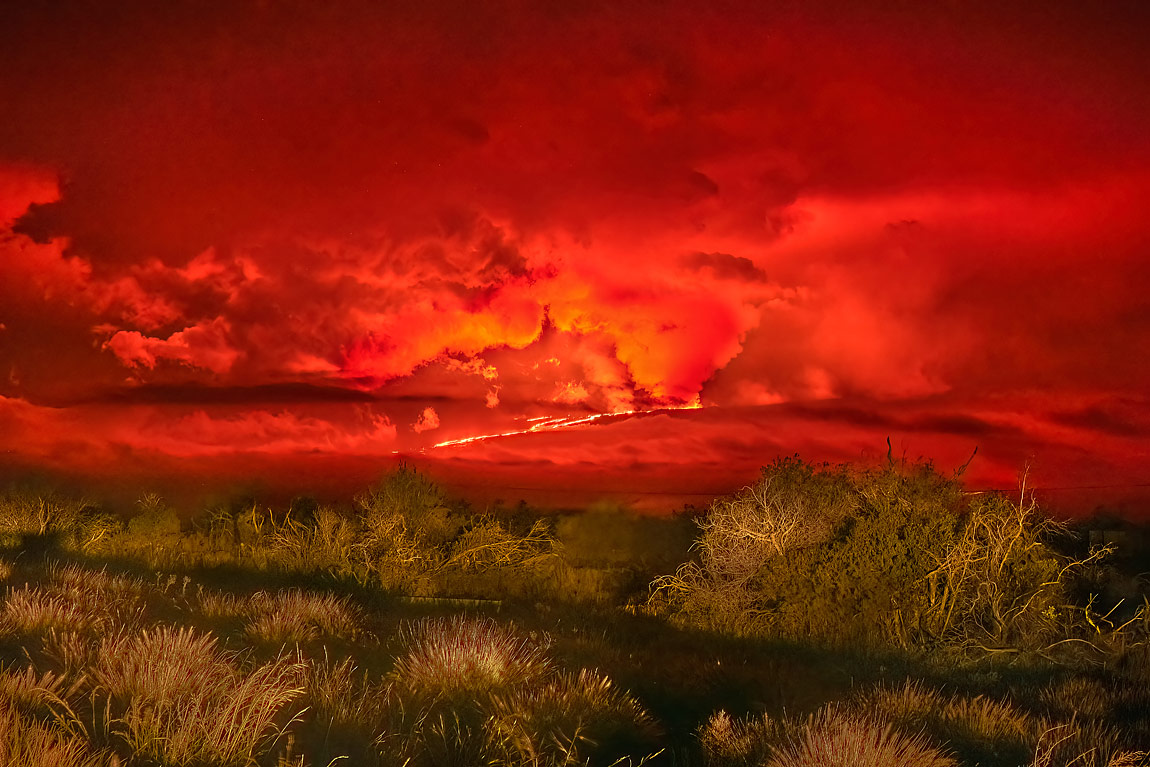The Mauna Loa volcano on the Big Island of Hawaii is said to be the largest active volcano on earth. It is one of two massive volcanoes on the Island (the other being Mauna Kea) that rise almost 14000 feet above sea level. While Mauna Loa is considered active, it had not erupted since 1984, and many wondered if it ever would again. So it was a bit surprising when, in late 2022, underground activity was detected.
But volcanoes follow their own timeline, and activity alone does not foretell an imminent eruption. In this case, it did, however, and near midnight on November 27, an eruption began. You can imagine the commotion created when the world's largest active volcano suddenly erupts on a relatively tiny island in the Pacific! Aside from lava flow, the immediate risk comes from potentially large clouds of ash and volcanic gases (called "vog"). As it turned out, the atmospheric disturbance was not as significant as feared, and we decided, like many others, that we must make the journey to the volcano to observe this momentous event.
We made an initial trip during daylight on November 28 but found the volcano to be almost totally obscured by clouds, most likely of its own making. Since our departure from the Island was only one day away, we thought we would miss our chance to see more. But that night, we were astounded by the brilliant red glow that filled the sky and was plainly visible from our home more than 35 miles away. So we were compelled to go again and began the drive back up to the volcano.
With each passing mile, the scene became more astounding, and we stopped numerous times to set up a tripod in the pitch black along the roadside and take a few shots, believing that we might not be able to get much closer. Ultimately, we made it to the nearest accessible point, which was still more than 10 miles from the lava flow. Lines of lava could be seen snaking down the volcano's flanks, and the cloud and vog-filled sky seemed to be on fire.
We explored several spots for photographs but were challenged by the fact that much of this area is already covered with black lava from ancient eruptions, so pictures would show little but the lines of lava. We finally settled on a spot with some foreground growth. Next, I worked to find exposure settings that would simultaneously light this area while not being overwhelmed by the brilliance beyond.
This photo was the best of many attempts that night to capture both the mountain and sky inferno beyond and provide foreground detail for scale and context. High ISO, long exposure, and much bracketing were all essential. Of the cameras I own, the DC-51 has the best low-light sensitivity and was a good choice.
We were standing at about 6500 feet of elevation and viewing a lava flow that began at about 10000 feet. The volcano peak is to the far right in this photo and is 15 miles away. The scale of this scene is always staggering, even on a calm, clear day. Under these conditions, the immensity of this natural event was astonishing and probably a once-in-a-lifetime experience. As it happens, this eruption was short-lived, and the volcano is now once again dormant. However, some new activity has just been detected, so who knows what's next!


